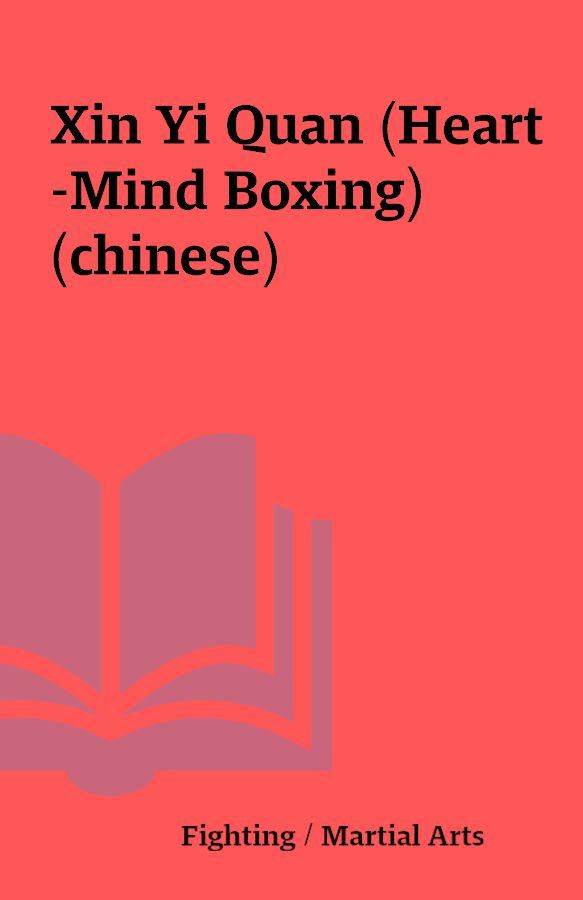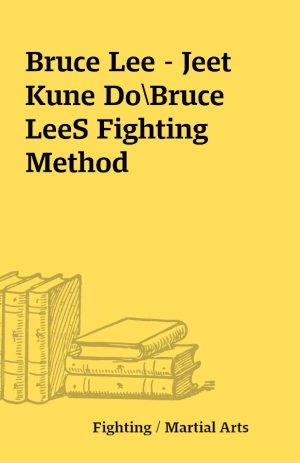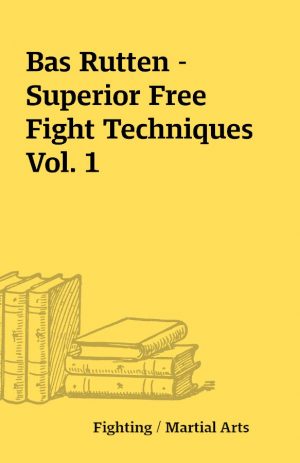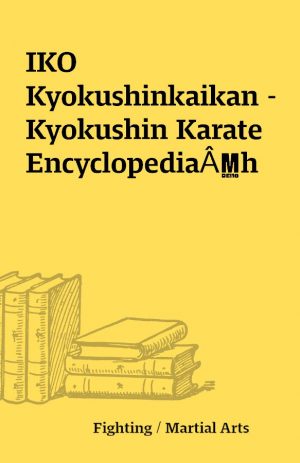Xin Yi Quan (Heart-Mind Boxing) (chinese)
Xin Yi Quan (Heart-Mind Boxing)
[2 VCD – Rip, 1mpg, 1 dat]
Description
http://www.yesasia.com/global/dai-shi-xin-yi-quan-ji-ben-gon…Xing Yi Quan (Chinese: 形意拳; pinyin: Xíng Yì Quán; Wade–Giles: Hsing I Ch’üan) is classified as one of the Wudang styles of Chinese martial arts.[2] The name of the art translates approximately to “Form-Intention Fist”, or “Shape-Will Fist”.[3]Xing Yi is characterized by aggressive, seemingly linear movements and explosive power that’s most often applied from a short range. A practitioner of Xing Yi uses coordinated movements to generate bursts of power intended to overwhelm the opponent, simultaneously attacking and defending. Methods vary from school to school, but always include bare-handed fighting training (mostly in single movements/combinations and sometimes in forms) and the training of weapons usage with similar or identical body mechanics to that used for bare-handed fighting. The most basic notions of movement and body mechanics in the art were heavily influenced by the practice of staffs and spears. Historically and technically related martial arts include Dai Xin Yi Liu He Quan, Liu He Xin Yi Quan or Yi Quan.LegendsThe “Four Generals of Zhongxing” painted by Liu Songnian during the Southern Song Dynasty. Yue Fei is the second person from the left. This portrait is believed to be the “truest portrait of Yue in all extant materials.”[4]The earliest written records of Xing Yi can be traced to the 18th century, and are attributed to Ma Xueli of Henan Province and Dai Long Bang of Shanxi Province. Legend credits the creation of Xing Yi to renowned Song Dynasty (960-1279 AD) general Yue Fei,[5] but this is disputed.[1]According to the book Henan Orthodox Xingyi Quan written by Pei Xirong (Chinese: 裴锡荣) and Li Ying’ang (Chinese: 李英昂), Xing Yi Dai Long Bang”…wrote the Preface to Six Harmonies Boxing in the 15th reign year of the Qianlong Emperor [1750]. Inside it says, ‘…when Yue Fei was a child, he received special instructions from Zhou Tong. Extremely skilled in spearfighting, he used the spear to create fist techniques and established a skill called Yi Quan (意拳). Meticulous and unfathomable, this technique far outstripped ancient ones.” “于乾隆十五年为“六合拳”作序云:“岳飞当童子时,受业于周侗师,精通枪法,以枪为拳,立法以教将佐,名曰意拳,神妙莫测,盖从古未有之技也。”[6][7]According to legend, throughout the Jin, Yuan and Ming Dynasties few individuals had studied this art, one of them being Ji Gong (also known as Ji Longfeng and Ji Jike) of Shanxi Province. After Yue Fei’s death, the art was ‘lost’ for half a millennium. Then, during the Ming and Qing Dynasties in Shaanxi Province’s Zhongnan Mountains, Yue Fei’s boxing manual was said to have been discovered by Ji Gong. It is more likely though that Ji Jike had created the art based on prior martial arts experience, or passed on an art that had already existed.General history (ancient times – 20th century)Yang Jwing-Ming (who is not a practitioner of the art) argues that aspects of Xing Yi Quan (particularly the animal styles) are identifiable as far back as the Liang Dynasty at the Shaolin Temple.[8] According to Jwing-Ming, Yue Fei therefore did not strictly invent Xing Yi Quan, but synthesized and perfected existing Shaolin principles into his own style of gongfu which he popularized during his military service. Nonetheless, according to Jwing-Ming, Yue Fei is usually identified as the creator because of his considerable understanding of the art (as shown in the work The Ten Theses of Xingyiquan, credited to Yue) and his cultural status as a Chinese war hero. It ought be noted that in Chinese culture, it is common to attribute the creation of great traditions to legendary individuals. In such a way, the art of Tai Ji Quan is attributed to the legendary Zhang Sanfeng, and Daoism to Laozi, even though as in the case with Yue Fei, there exists no proof for such claim.Other martial artists and Chinese martial art historians, such as Dan Miller, Cartmell, and Brian Kennedy, hold that this story is largely legendary; while Xing Yi Quan may well have evolved from military spear techniques, there is no evidence to support that Yue Fei was involved or that the art dates to the Song dynasty. These authors point out that the works attributed to Yue Fei’s role long postdate his life, some being as recent as the Republican era, and that it was common practice in China to attribute new works to a famous or legendary person, rather than take credit for oneself.[9][10] One source claims that the author of the “preface” is unknown, since no name is written on the manuscript. Most practitioners just assume it was written by Dai Long Bang. Some researchers of martial arts believe that it was actually written in Shanxi during the final years of the 19th century.[11] In addition, historical memoirs and scholarly research papers only mention Zhou Tong teaching Yue archery and not spear play.[12][13] Yue historically learned spear play from Chen Guang (陈广), who was hired by the boy’s paternal grandfather, Yao Daweng (姚大翁).[14][15]Beginning in the late Ming era and Ji Longfeng’s time, evidence for the art’s history grows firmer. Ji Longfeng, also known as Ji Jike, is the first person which all agree had both existed and practiced the art. Ji Longfeng’s contributions to the art are described in the Ji Clan Chronicles (姬氏族谱; pinyin: Ji Shi Jiapu). Like the Preface, the Chronicles describes Xing Yi Quan as a martial art based on the combat principles of the spear. The Chronicles, however, attributes this stylistic influence to Ji himself, who was known as the “Divine Spear” (神槍; pinyin: Shén Qiāng) for his extraordinary skill with the weapon. Nowadays, many believe that the style Ji Longfeng was taught had been Shaolin Xin Yi Ba[16] (a style which still exists today, and bears minute resemblance to XinYi LiuHe Quan). Ji Longfeng referred to his art as Liu He, The Six Harmonies, a reference to the most highly developed spear style practiced in the late Ming military.Some speculate that during that period in the development of the art, either Ji Longfeng or some of his students had a connection with monks at the famous Shaolin Temple on Song Mountain. There exists a martial art called ‘Xin Yi Ba’, which is still taught at the general location of the temple, and bears a few similarities to Xing Yi related styles. Some claim that Shaolin Xin Yi Ba had been taught to the Shaolin monks by Ji Longfeng’s line, while others hold the view that Ji Longfeng was taught martial arts by the monks.From Ji Longfeng, the art was passed down to Cao Jiwu. From Cao Jiwu, the art split into its two biggest branches. One branch came down from Cao’s student Ma Xueli,[17] and became Xin Yi Liu He Quan – an art still widely practiced today, which compared to other lineages, have not undergone many changes over the generations.[18] The other branch that came down from Cao Jiwu was through his other student, Dai Longbang.[19] The latter passed the art into the Dai clan, which had made many changes to it, mixing it with several arts and skills that had already existed in the Dai family. The art remains in the Dai clan to this day, but has also spread elsewhere in China and around the world.The art remained fairly obscure until Li Luoneng (also known as Li Nengran) learned the art from the Dai family in the 19th century. It was Li Luoneng and his successors — which include Guo Yunshen, Song Shirong, Che Yizhai, Liu Qilan and Li Taihe (who would popularize Xing Yi Quan across Northern China).It is known that Li Luoneng was proficient in other martial arts before studying Dai clan’s Xin Yi. Some claim his original art was Qimen Quan (奇门拳), perhaps his family’s style, while others believe he actually studied Tongbei Quan and Gongli Quan.[20] Li came to study under the Dai family either because he heard of their fame in the martial arts and business, or maybe as suggested by others, after having fought and lost to a practitioner of their art. It is generally agreed he then settled in the area of their village, and grew and sold vegetables, which earned him the nickname ‘Li Lao Nong’ 李老农 (Old Farmer Li, but also ‘Respectable Farmer Li’). Initially, members of the Dai clan refused to teach him, but he eventually won over their trust, and he was taught by Dai Wenxiong, Guo Weihan, or both. After learning Dai Xin Yi for a number of years, perhaps over a decade, Li left the Dai territories and traveled across Shanxi and Hebei provinces, teaching for many years his own elaboration on the art, now called ‘Xing Yi Quan’. No reasons were ever recorded for the many changes[21] Li made to the art, but there are those who claim that Li wished to compete with the Dai clan’s fame, perhaps because of some grudge. Li and many of his students and grand-students were famous for offering bodyguard and caravan escort services.Recent history (20th and 21st centuries)A condensed version of Xing Yi Quan was taught to Chinese officers at the Military Academy at Nanjing during the Second Sino-Japanese War for close quarters combat. This included armed techniques such as bayonet and sabre drills alongside unarmed techniques.[22]Sun Lutang, a later exponent of the art, became famous in the early 20th century for his skills (chiefly in the Beijing and Tianjin areas), and for the martial books he had written about the Internal arts. During Sun Lutang’s lifetime and martial ‘career’, he and several of his contemporaries began to classify Xing Yi, together with Taiji Quan and Bagua Zhang, as ‘Wudang Martial Arts’ style.[2] Sun also exchanged knowledge with his friend and colleague Fu Zhensong, who subsequently took this branch of the art to southern China (after it had been mostly practiced in the northern parts of the country for centuries). Later, many others have spread the art across China and the world. Yi Quan, which had been evolved from Xing Yi Quan by Wang Xiangzhai, became especially widespread during the 20th century, in China and across the world.Following the Cultural Revolution in China, some Xing Yi forms have been adapted to fit the needs of modern practitioners of the competitive sport of Wushu. This meant that various movement forms from the art were adapted to a competitive format, in which the emphasis was put on aesthetics and flowery movements, rather than on fighting. The style is nonetheless relatively rare in wushu competitions because all wushu practitioners must compete in several mandatory events, which make Xing Yi, a non-mandatory art, a secondary priority in wushu competitive circles.As there had never been a single organizational body governing the teaching of the art, several variant styles and sub-styles developed. Although there are classical texts which include specific encoded instructions and general guidelines for practice, many of these are ignored by most modern practitioners, and interpreted in different ways by those who follow their instruction (this is depicted in the lineage chart further down this page). As a result, over the decades and especially over the last few dozen years, branches of the art have considerably differentiated and diverged. This trend was strengthened by cross influences various Xing Yi teachers had from other martial arts and martial artists, and the spread of Xing Yi to the Western World.The art began to be taught in the West somewhere along the 1960s-1970s. However, it only rose to prominence among martial arts communities worldwide during the first decade of the 21st century. Currently, it is still not well known among the general public. One explanation for this situation is that unlike other traditional oriental martial arts, Xing Yi was not a notable style in movies which became popular in the West (and though a modified ‘wushu’ version of it appeared in The One, starring Jet Li, this was not told or hinted to the viewers as part of that film’s script).Arguably, the most common Xing Yi Quan lineage in the West today is of the Yi Zong branch,[23] which came down from Zhang Junfeng. Many of Zhang’s students and grand-students, such as Kenneth Fish (martial artist), Hung I-Hsiang, Su Dongchen,[24] Luo Dexiu, Xu Hongji and others have been teaching his Xing Yi to Westerners since the 1980s – especially Americans. This branch became the most popular because Taiwan was open to Westerners during the 20th century, while throughout most of that century, the Communist regime on mainland China did not allow Westerners to visit regularly, and thus people were not exposed to branches of the art from the mainland. Contrary to popular belief, spread by some Taiwanese teachers, the art had not ‘died out’ on the mainland, but was simply inaccessible to outsiders for several decades (proof of this is that many lineages of the art discussed and referenced on this page had survived The Great Leap Forward and The Cultural Revolution). Another popular Taiwanese branch in the West is Wang Shujin’s lineage, which was chiefly transmitted by his student Wang Fulai.There are also several lineages from Tianjin which are nowadays taught in the West, namely in Canada[25] and Israel.[26] Lines of Dai XinYi and XinYi LiuHe are still rare in the West, and can be said to even be relatively rare in China, though they are not at risk of becoming ‘extinct’. In the United States, Dai XinYi is taught by Li Tailiang and several of his students.[27] Yi Quan, on the other hand, has become exceedingly popular in the West, being taught in many schools, especially in Europe.[28] There are no statistics as to the number of practitioners in any of these arts in either China or other countries.Disputed historyAncient Chinese texts, like those which make up the ‘Xing Yi Classics’, often contain characters whose meanings are obscure or have disappeared completely from the Chinese language. Specialized terms which describe historically specific concepts (names of ancient weapons for example) are commonly interpreted with regards for their closest, modern linguistic equivalent. The results can be problematic, producing translations which are linguistically correct but inconsistent within a fighting or martial context.The recognized founder of Bagua Zhang, Dong Hai Chuan, was reputed to have fought Guo Yunshen with neither able to defeat the other – though it is possible that they were training together. It would have been controversial at the time for Dong Hai Chuan to have studied under Guo Yunshen, since Dong was the older of the two. The most neutral viewpoint would be to say that they trained together, which may explain the stylistic similarities between Bagua Zhang and the Xing Yi Quan monkey shape. Frantzis[29] argues that this encounter never took place and that Guo and Dong had little contact with each other. Frantzis argues that a Xing Yi – Bagua exchange was more likely to have occurred in Tianjin c. 1900 where xingyi masters Li Cunyi and Zhang Zhaodong, Bagua master Cheng Tinghua, and four other xingyi and bagua teachers lived together (Frantzis, 1998, p. 179). Sun Lutang states in his autobiography that the legendary fight between Guo Yunshen and Dong Hai Chuan never happened.[30] The book states that the truth of the matter is that Guo Yunshen actually fought one of his older xingyi brothers and lost. Sun Lutang was a student of both Guo Yunshen and Cheng Tinghua so this stance on the subject seems to be one of the most accurate. Treating the story of Dong Hai Chuan and Guo Yunshen as allegory, however, reveals a common training protocol among Xing Yi Quan and Bagua Zhang practitioners. Often, because Bagua Zhang requires significantly more time for a practitioner’s skill to mature, it is acceptable to learn Xing Yi Quan first or simultaneously. Such a practitioner develops a tactical vocabulary that is more readily apparent than the core Bagua Zhang movements.For controversies concerning the teaching of one person by another, read under lineage chart further down this article.Dai Shi Xin Yi Quan (Dai Family Heart-Mind Boxing)Dai Family Xinyiquan is one of the rarest and secret branches of Xin Yi Boxing.It is often considered the Mother style for Hebei and Shanxi Xingyiquan. The System is famous for its focus on Internal Skill (Neigong) and Dantian Development.Jibengong Ji Wu Xing Quan(Basic Internal Methods and Five Elements Fists)Teaches Dantian Development Methods, Ape Presents Peach, Lion Rolls Ball, Footwork, Five Elements Fists,Creation Cycle – changing from one Fist into another; destructive Cycle – applying one Fist against another.
You must be logged in to post a review.






Reviews
There are no reviews yet.